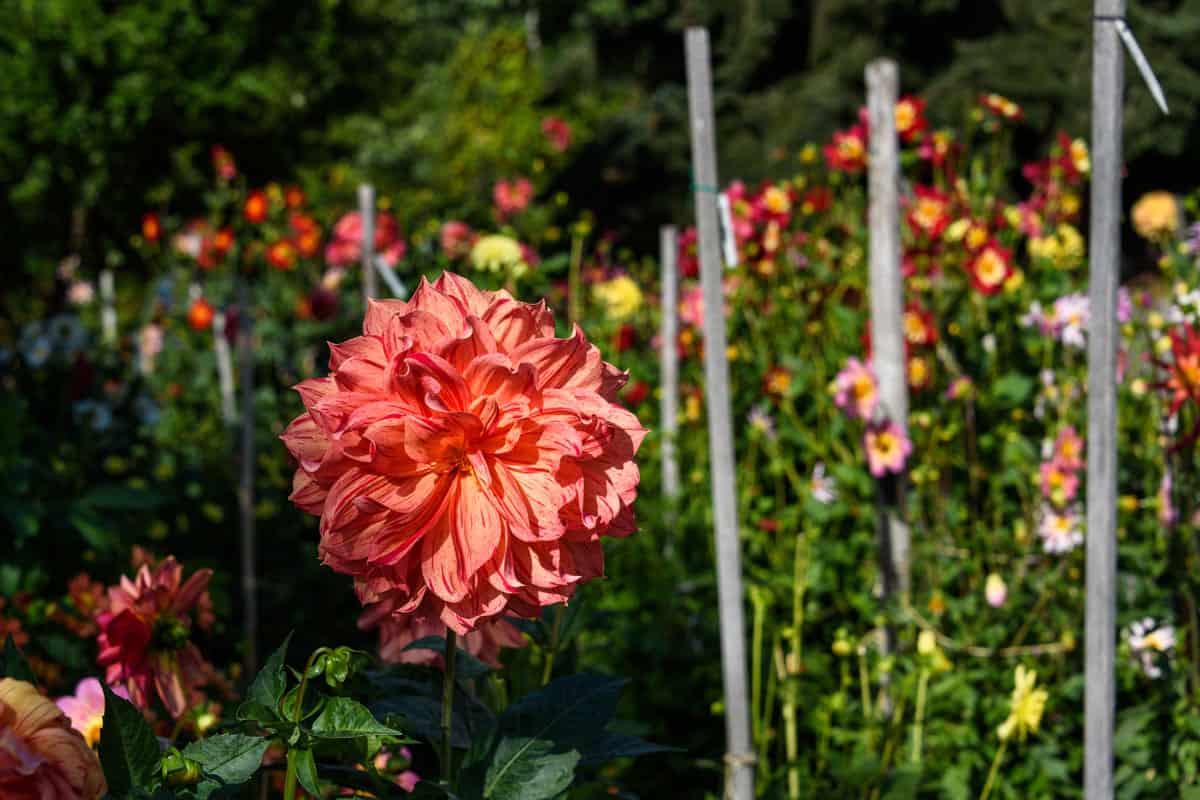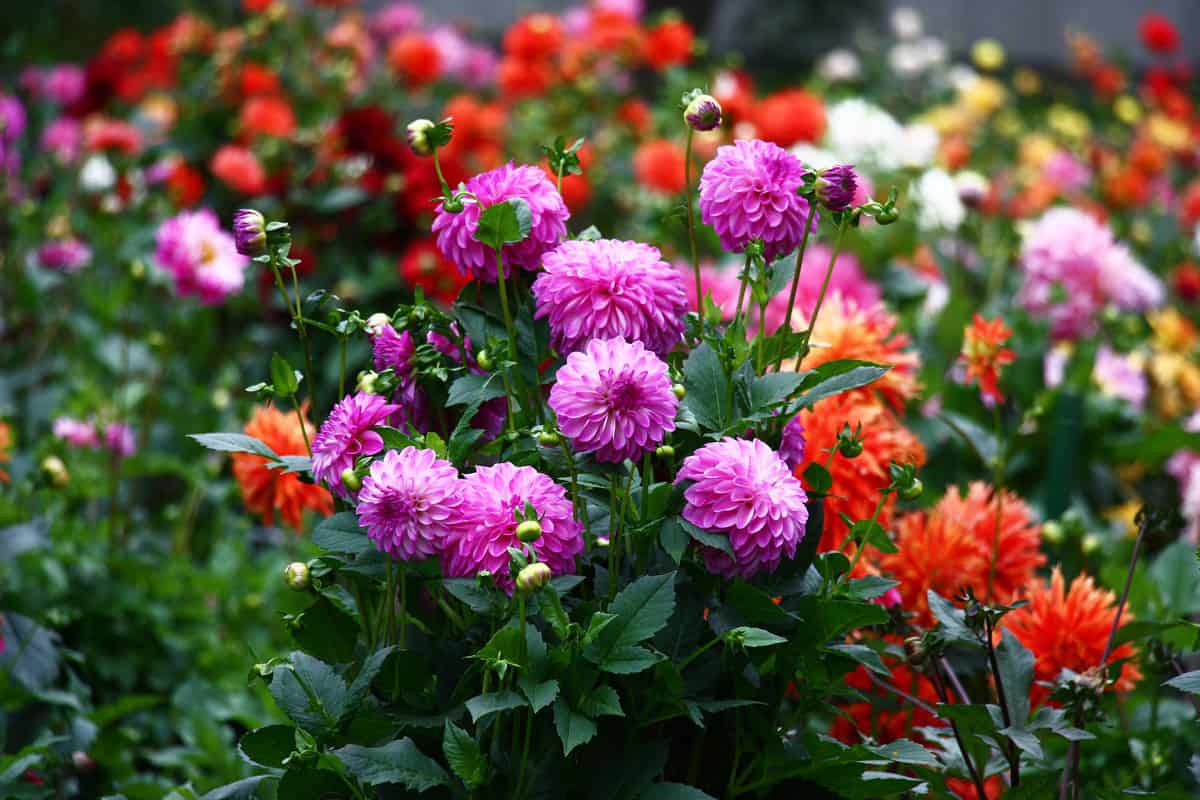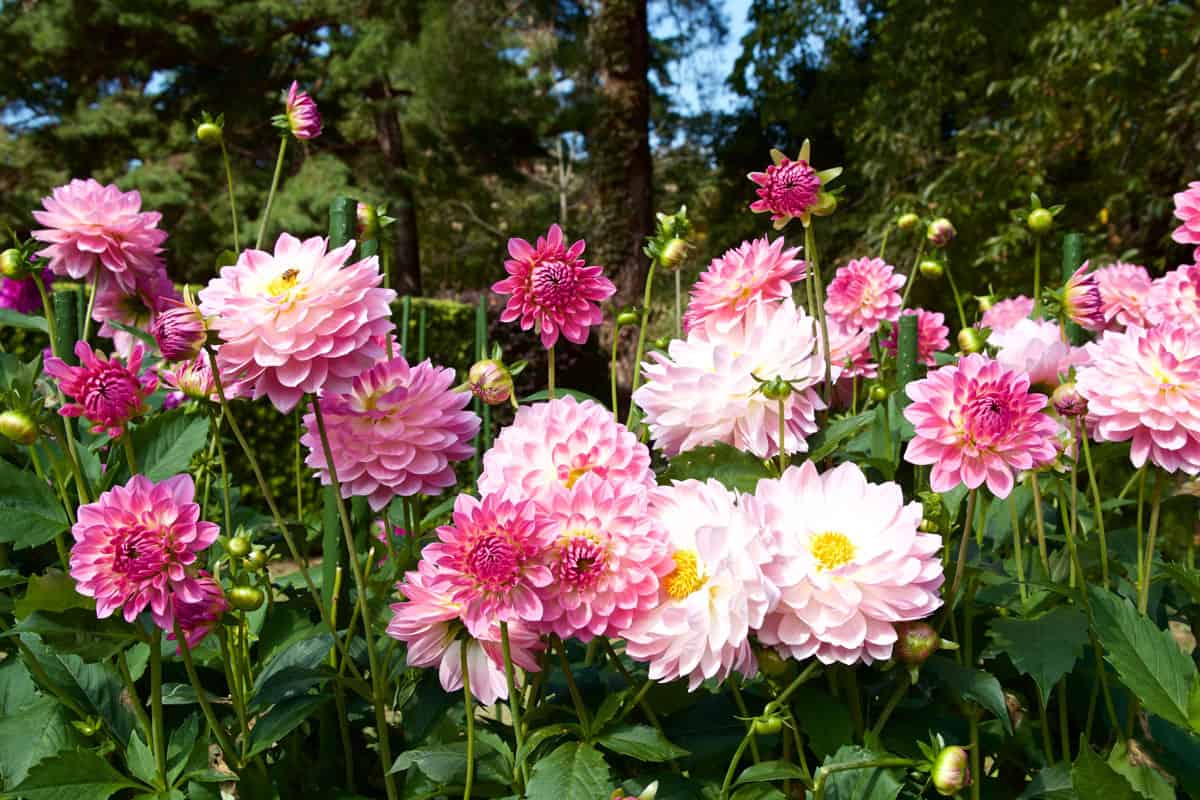It's important to keep dahlias supported since their stems tend to bend when flowers start to grow. Staking them is one method, but could dahlias be supported by a trellis? How would you do it? We have researched answers for you.
Dahlias start to produce top-heavy flowers after a few years of growth. The preferred method to keep them erect is staking each individual dahlia. Here is how you can do it:
- Dig your stake on the corners of the dahlia beds. Consider getting steel posts or hardwood stakes to fully support the dahlias.
- Leave 36-48 inches of space between each stake.
- Wrap the stakes with twine. Make sure the lowest twine is 12-18 inches off the ground.
- Continue adding twines as they grow, making sure to leave 12 inches of space in between for adequate support.
There are many ways you can take care of your dahlias and support their blooms so they can thrive and keep adding beauty to your garden. Keep reading below to learn more about different staking strategies and the materials you can use to grow your dahlias.

How do you stake individual dahlias?
Staking individual dahlias is essential since they tend to become top-heavy in which the stems cannot always support their growing blooms, especially during windy days.

Staking individual dahlias is simple. You just need to support them with a stake and tie the branches in as they grow. This will keep the branches from breaking and the stems from bending, making them straighter and stronger even with larger blooms.
- Prepare soft ties or twines that you'll need to wrap around the stems.
- Prepare a bamboo or wooden stake.
- Put the stake close enough to the plant that it provides adequate support, but too close that it might interrupt the plant's growth.
- Push the stake into the soil then place the tie around the plant. Go above or below the leaves so as not to interrupt their growth.
- Make sure the tie is only cradling the leaves and not strangling them.
See it in action here:
How to Pinch Smaller Dahlias

Pinching dahlias while they are young will give you bigger and bushier bloom since it stimulates the energy to produce more stems and flower buds. In a way, you're preparing the dahlias to hold their blooms better since they would be stronger and easier to maintain.
It may take more time for the flowers to bloom, but it would be worth the wait since you wouldn't have lanky dahlias.
Here is how you can pinch your dahlias:
- Check if your plant is 12-16 inches tall.
- Prepare shears and find the center stalk. You should see at least two sets of leaves on the stalk.
- Cut the center stalk, around the area where new shoots or branches have grown. This would program the plant to be bushier, which you might prefer.
Make sure you pinch your dahlias on a dry day. The plant shouldn't get watered in any way after pinching since water could get inside the cut stalk. If water gets in, it will rot out of the plant since water wouldn't be able to drain out from the hollow center.
If you see leaves touching the ground, you can cut them off too since they might be getting nutrients but not enough sunlight, which will be counterproductive as the plant grows.
What should you use for stakes?
The material you use for staking your dahlias is important depending on the size of the plant. Some stakes might be better than others, but they technically have the same function. It all depends on your aesthetic preferences and whether you want your stakes to blend with your garden.
Here are stakes you can use to support your dahlias.
Wood Stakes
Hardwood stakes are ideal for dahlias that grow up to 48 inches tall. Make sure to stake it at least 3 inches away from the center stalk; you don't want it to block the leaves and stems and make it grow to an odd shape.
Pound the wooden stake at least 12 inches deep into the ground to make it withstand windy days.
Make sure to treat your wooden stakes with sodium borate to prevent the wood from rotting. You can also seal the hardwood so moisture won't be able to penetrate it.
Check out these wood stakes on Amazon
Bamboo Poles
Bamboo poles provide a natural look to your dahlia beds, and they are a more low-maintenance alternative to hardwood stakes. They are naturally rot-resistant and pest-resistant, and they can withstand unpredictable weather conditions.
Bamboo stakes are easily accessible.
Check out these bamboo poles on Amazon
Metal Rebar
Metal rebars are extremely durable, and they can withstand strong winds effectively supporting your dahlias. However, if you live in a humid area, these metal stakes can be prone to rust which can affect the leaves and the flowers.
Rusting won't happen immediately, but if you observe rust, make sure to remove the stakes and replace them with something else. A new rebar or another material stake will do the job without damaging the dahlia.
Check out these metal rebars on Amazon
When do dahlias start sprouting?

Dahlias will typically begin sprouting within 2-4 weeks after planting the tubers, but it can take longer depending on the environment. They will need to have access to full sunlight, and their soil needs to be loose and well-draining.
Make sure to expose dahlias to the morning sun for 6-8 hours. You can transfer them to a more shaded area during the afternoon.
The first thing you'll see growing is the roots. You will need to wait for a little while for the stems to emerge--patience is key!
It would take at least eight weeks for the dahlias to bloom. During the window before the blooms start to grow, you'll need to be consistent with their care and maintenance.
Caring for Growing Dahlias

Here are ways to take care of your growing dahlias so you can enjoy their blooms:
- Water the plants at least 2-3 times a week. Make sure the soil is not too moist or too dry.
- Occasionally apply low-nitrogen fertilizers, about every 3-4 weeks for in-ground plants.
- Expose the dahlias consistently to morning sunlight. This would expedite the dahlia's blooming.
- Pinch them as necessary for bushier growth.
- Stake them to support the stem. They tend to bend when the blooms become too heavy.
- To avoid legginess, moderately disbud and disbranch as necessary.
Growing dahlias need a constant temperature of 60F-70F. If the weather fluctuates or when winter comes, dig up the dahlia tubers and place them in a ventilated area. Make sure the temperature in the room is controlled.
There are testimonies that packing the dahlias in peat moss or sand can maintain dahlias well. You can keep them at a temperature of about 40F-45F.
Final Thoughts

Dahlias are beautiful flowers that can spruce up your landscape. You'll need to maintain them well, and you need to make sure you support them so they can withstand unpredictable conditions.
If you enjoyed this article, check out "11 Big Rocks Landscaping Ideas" and "15 Front Yard Landscaping Ideas With Rocks But No Grass"




![man replanting herb with yellow flowers for use in landscaping. 15 Perennials That Absorb Water [Incredible Choices For Foundation Landscaping]](https://landscapingbase.com/wp-content/uploads/2022/09/man-replanting-herb-with-yellow-flowers.-15-Perennials-That-Absorb-Water-600x400.png)
![Big custom made luxury house with nicely trimmed and landscaped front yard, South Facing Front Yard Landscaping Ideas [17 Ideas To Increase Your Curb Appeal]](https://landscapingbase.com/wp-content/uploads/2022/09/BIGCUS1-600x400.jpg)
